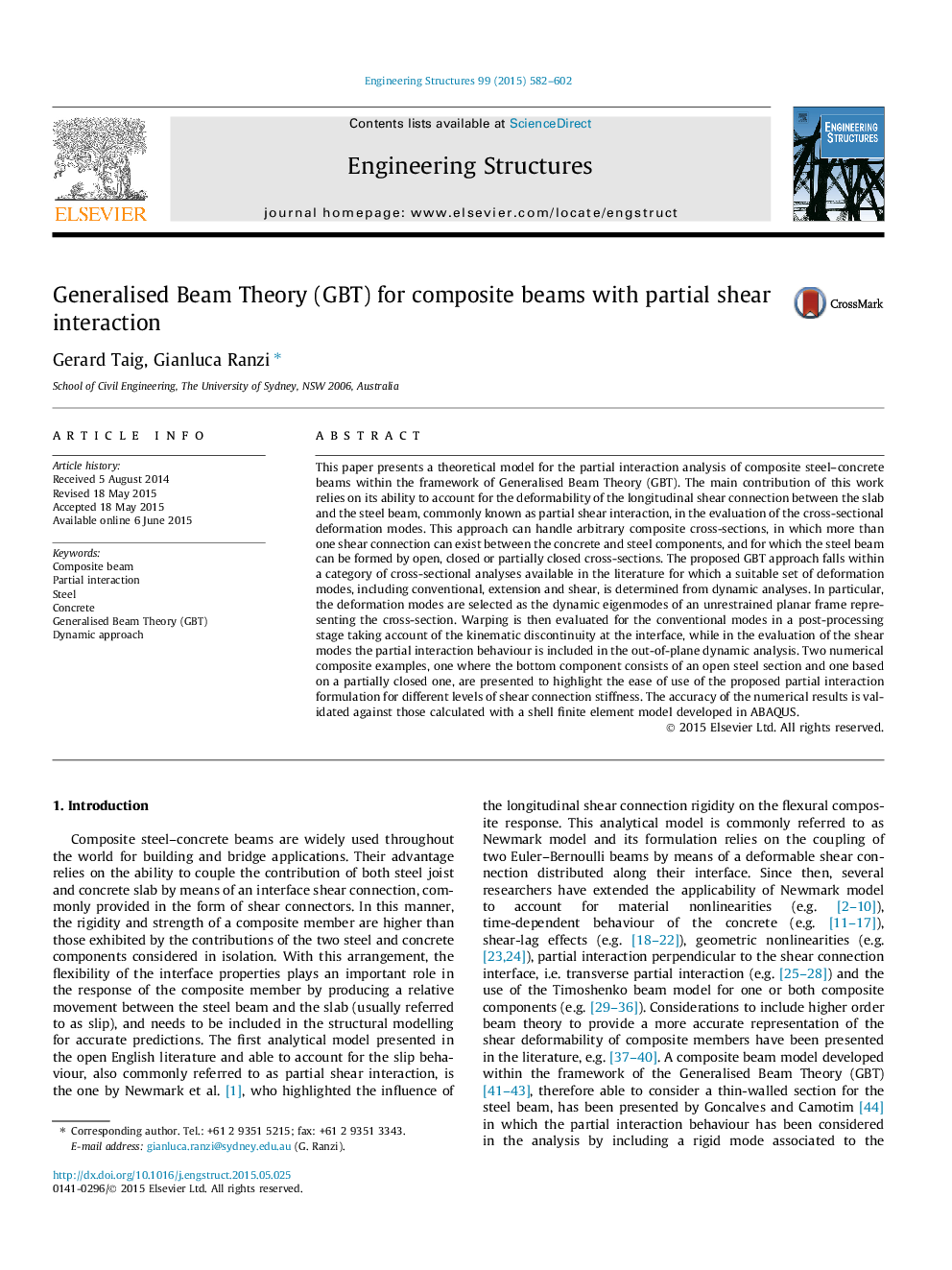| کد مقاله | کد نشریه | سال انتشار | مقاله انگلیسی | نسخه تمام متن |
|---|---|---|---|---|
| 266206 | 504345 | 2015 | 21 صفحه PDF | دانلود رایگان |

• GBT model for the partial interaction analysis of composite beams.
• Approach applicable open, closed or partially closed cross-sections.
• GBT formulation includes conventional, extension and shear modes.
This paper presents a theoretical model for the partial interaction analysis of composite steel–concrete beams within the framework of Generalised Beam Theory (GBT). The main contribution of this work relies on its ability to account for the deformability of the longitudinal shear connection between the slab and the steel beam, commonly known as partial shear interaction, in the evaluation of the cross-sectional deformation modes. This approach can handle arbitrary composite cross-sections, in which more than one shear connection can exist between the concrete and steel components, and for which the steel beam can be formed by open, closed or partially closed cross-sections. The proposed GBT approach falls within a category of cross-sectional analyses available in the literature for which a suitable set of deformation modes, including conventional, extension and shear, is determined from dynamic analyses. In particular, the deformation modes are selected as the dynamic eigenmodes of an unrestrained planar frame representing the cross-section. Warping is then evaluated for the conventional modes in a post-processing stage taking account of the kinematic discontinuity at the interface, while in the evaluation of the shear modes the partial interaction behaviour is included in the out-of-plane dynamic analysis. Two numerical composite examples, one where the bottom component consists of an open steel section and one based on a partially closed one, are presented to highlight the ease of use of the proposed partial interaction formulation for different levels of shear connection stiffness. The accuracy of the numerical results is validated against those calculated with a shell finite element model developed in ABAQUS.
Journal: Engineering Structures - Volume 99, 15 September 2015, Pages 582–602